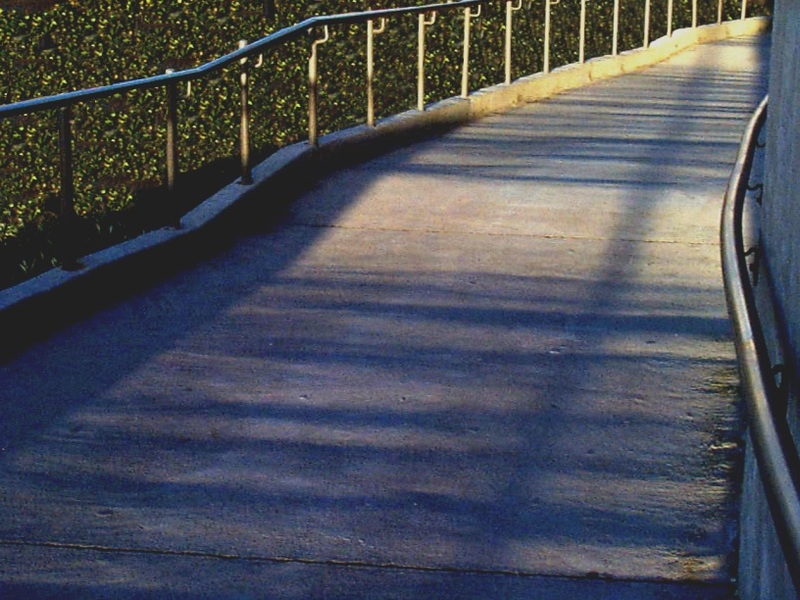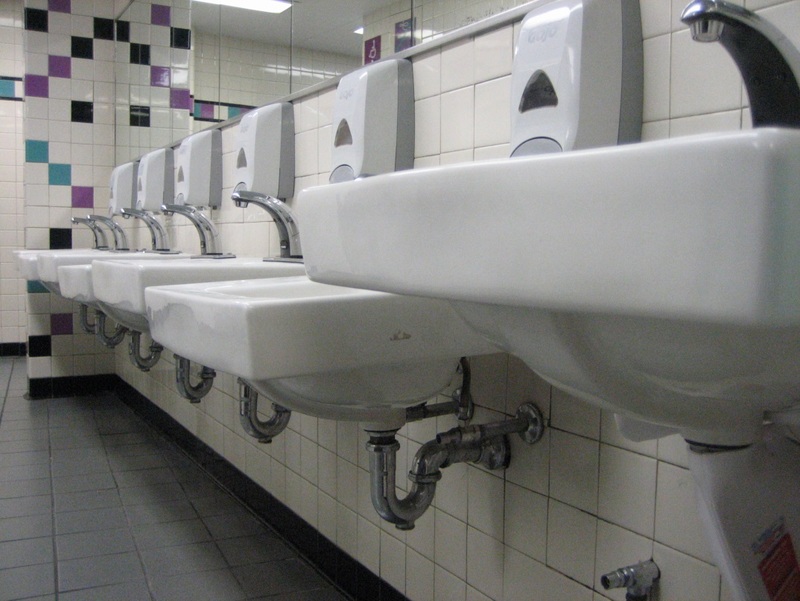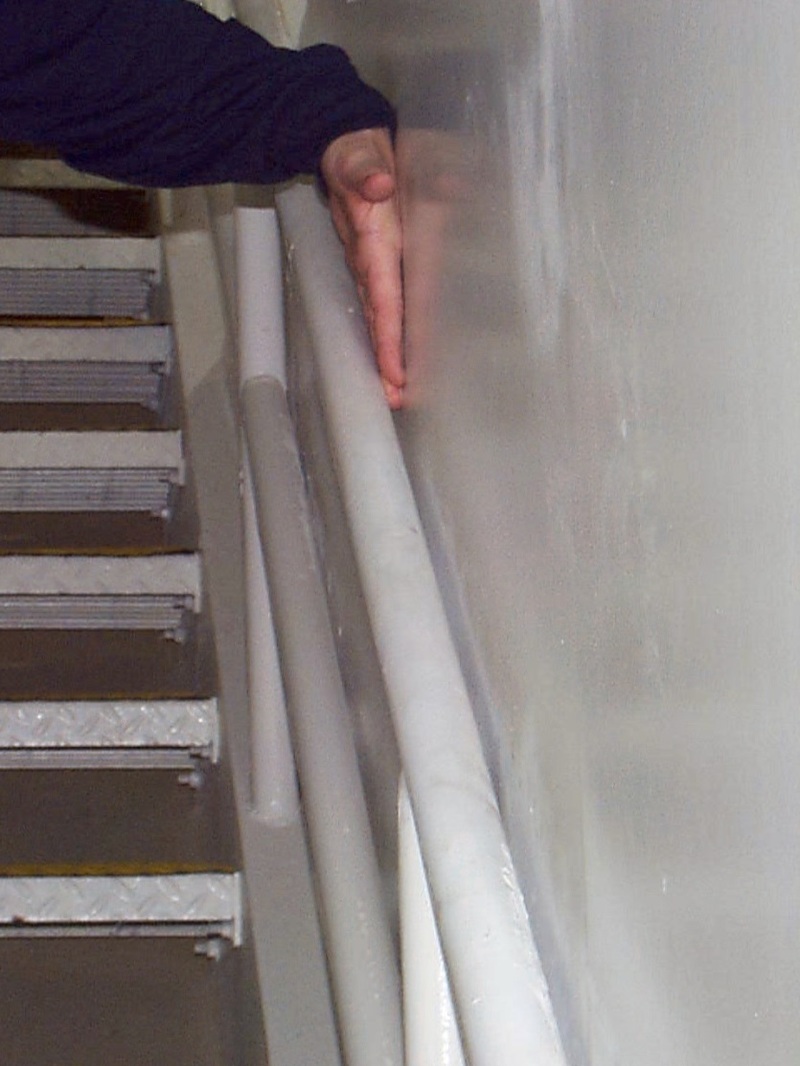Understanding the proper use of “construction and manufacturing tolerances” under the ADA requires understanding several key concepts. First, as defined in Section 104.1.1 and clarified in its advisory, they are intended to apply only to certain sections of the 2010 ADA Standards where dimensions are stated as single dimensions or as simple minimums or maximums. Second, they apply primarily to difficulties caused by field conditions and the inherent limitations of materials and methods used in construction and manufacturing building materials and systems. And, third, they cannot be used to excuse ignorant, careless, or sloppy design or construction.
Limitations of Materials and Methods
Sloppy Construction
True “construction industry tolerances” as defined by the ADA Standards, should not be confused with another concept that we call “Acceptable Measurements.” Conditions that fall within one true tolerance of the requirements in the ADA Standards are fully compliant with the standards in new construction, alterations, and existing facilities. “Acceptable Measurements,” on the other hand, are simply existing conditions and dimensions that plaintiffs and facility owners agree can remain if the facility owners will fix everything that falls outside of those “Acceptable Measurements”. These measurements are often listed in a readily achievable barrier removal or program access consent decree or settlement agreement or are agreed upon later when disagreements arise about what the original agreement actually intended. They are always case-specific and do not apply to others outside of the case where they are listed. They are simply negotiated settlement conditions agreed upon by the parties in the specific case to which they apply. True tolerances under the ADA are far more specific, should be relatively consistent, and are broadly applicable.
As you can see in the requirements from the sections below, the 2010 ADA Standards significantly expanded the explanation of dimensional tolerances when compared to the 1991 Standards. Many of the questions that were open to question under the language of the 1991 Standards were answered by the language of the new section and by its advisory text.
Ignorant or Careless Design or Construction
Ignorant or Careless Design or Construction
Q1.) When a ramp has a maximum slope of 1:12 or 8.33%, is that considered a range of from 0% to 8.33% which would allow no slope greater than 8.33% or is that a simple maximum which would allow a tolerance above 8.33%? Similarly, is a cabinet countertop that can be no higher than 34” AFF a range of from 0” to 34” AFF with no additional height allowed, or is a tolerance allowed for variations in the floor surface or cabinet construction?
A1.) The consistent technical assistance on this question has been that both are subject to tolerances.
Q2.) What are the types of “field conditions” that were anticipated where the advisory says “tolerances recognized by this provision include those for field conditions”?
A2.) The design itself must always call for conditions that meet the specific standards. Tolerances are not an “oops factor” for careless or sloppy design. They are instead intended to allow for the practically unavoidable imperfections that will undoubtedly occur in the field as a result of the materials and methods used in construction. For example, a skilled brick mason cannot lay a perfectly vertical and straight wall. A skilled tile layer cannot create a perfectly flat wall behind a toilet room grab bar. And a concrete finisher clearly cannot guarantee that the slope of a concrete curb ramp will be consistently 8.33% across its entire surface. Tolerances are essentially the degree of perfection expected by skilled laborers working carefully with the materials specified. Many industry associations publish materials that specify what can be expected from their members. Those are usually the dimensions that can safely be considered industry tolerances. Where none exist, the effort to define them on a particular project becomes much more difficult.
David Kent Ballast, FAIA, in his book Handbook of Construction Tolerances: 2nd Edition, offers many well-researched and thoughtfully-analyzed opinions about what numbers he believes should be considered acceptable for a wide variety of construction materials and methods. In lawsuits that the Department of Justice has filed, DOJ has taken the position that tolerances cannot be predefined but must always be considered on a case-by-case basis considering the design, the materials and methods, and the specific field conditions. The California State Attorney General’s office has taken the same position. The conditions that result from that approach will vary from case to case.
Q3.) What are the types of “manufacturing processes” that were anticipated where the advisory says “tolerances recognized by this provision include… “those that may be a necessary consequence of a particular manufacturing process”?
A3.) This question is a bit easier to answer than the one above. One example of a manufacturing process that would fall into this category is the manufacturing of fiberglass shower stalls. Because the stiff shell is created on a form in one piece, it must taper from the back to the front to allow it to be removed from the form. Therefore, the width at the back will be smaller than the width at the front. To simplify the tolerance assessment, the 2010 Standards specify that the shower compartment be measured at the center points of opposing sides but the expectation is that the width at the back will not be significantly less than the width at the front. Similarly, the surfaces of ceramic tiles that form the wall behind a grab bar will not be perfectly flat due the manufacturing processes that make them. Therefore, the manufacturing tolerances and the construction tolerances must both be considered when measuring the clearances between a grab bar and a tile wall.
Q4.) Are conditions like door closers that require force in excess of the maximum allowed by the standards considered true tolerances or are they simply non-compliance with the maintenance requirements of 35.133 or 36.211?
A4.) In our opinion, the plain language of the term “Construction and Manufacturing Tolerances” does not include adjustable conditions that can meet the detailed requirements when properly maintained.
Q5.) What dimensions and conditions can practitioners reasonably consider to be compliant when the conditions, as constructed, do not meet the technical requirements exactly and there are no official, published, industry-developed tolerances?
A5.) This is the most difficult question and the most subject to varying opinions.
Sloped concrete and asphalt surfaces are an excellent example of this problem. To our knowledge, none of the industry associations have developed official tolerances for sloped concrete or asphalt surfaces except those laid down by large paving machines. Without official guidance but based on an analysis of the capabilities of the materials and processes, David Ballast generally recommends a tolerance of 0.5% in the cross slope direction and 1.0% in the direction of travel for concrete or asphalt ramps and curb ramps. In consent decrees, the Department of Justice has often ignored slopes in the direction of travel when no measurement on an accessible route exceeds 5.9% on sloped walking surfaces, 8.9% on ramps and curb ramps, and no more than 2.9% at any point for the cross slope on an accessible route. More information can be found in David Ballast’s book mentioned above and in the Access Board’s research study at http://www.access-board.gov/research/completed-research/dimensional-tolerances.
We will be posting more specific opinions about how to determine these tolerances in future months. Check back here for more information on a broader range of tolerances.
Q6.) How important is the method of measurement in considering the tolerances allowable in finished construction?
A6.) Methods of measurement are critical in determining both compliance and allowable tolerances. The industry’s standards are usually very clear about how to make their measurements. Unfortunately, where no standards exist, the methods are subject to interpretation and argument. For ramps and curb ramps, DOJ has issued two technical assistance documents that show how to measure slopes. They can be found in the ADA Checklist for Polling Places and the ADA Checklist for New Lodging Facilities.
We have also created the LinkedIn Group “ADA Tolerances” where participants can ask questions and share information and opinions on the topic. As more technical assistance materials and opinions are released by the Access Board and DOJ on this section of the Standards we will update this website. Check back periodically for new information.
2010 ADA Standards
104.1.1 Construction and Manufacturing Tolerances. All dimensions are subject to conventional industry tolerances except where the requirement is stated as a range with specific minimum and maximum end points.
Advisory 104.1.1 Construction and Manufacturing Tolerances. Conventional industry tolerances recognized by this provision include those for field conditions and those that may be a necessary consequence of a particular manufacturing process. Recognized tolerances are not intended to apply to design work. It is good practice when specifying dimensions to avoid specifying a tolerance where dimensions are absolute. For example, if this document requires “1½ inches,” avoid specifying “1½ inches plus or minus X inches. ”Where the requirement states a specified range, such as in Section 609.4 where grab bars must be installed between 33 inches and 36 inches above the floor, the range provides an adequate tolerance and therefore no tolerance outside of the range at either end point is permitted. Where a requirement is a minimum or a maximum dimension that does not have two specific minimum and maximum end points, tolerances may apply. Where an element is to be installed at the minimum or maximum permitted dimension, such as “15 inches minimum” or “5 pounds maximum”, it would not be good practice to specify “5 pounds (plus X pounds) or 15 inches (minus X inches).” Rather, it would be good practice to specify a dimension less than the required maximum (or more than the required minimum) by the amount of the expected field or manufacturing tolerance and not to state any tolerance in conjunction with the specified dimension. Specifying dimensions in design in the manner described above will better ensure that facilities and elements accomplish the level of accessibility intended by these requirements. It will also more often produce an end result of strict and literal compliance with the stated requirements and eliminate enforcement difficulties and issues that might otherwise arise. Information on specific tolerances may be available from industry or trade organizations, code groups and building officials, and published references.
1991 ADA Standards
3.2 Dimensional Tolerances. All dimensions are subject to conventional building industry tolerances for field conditions.
2010 Title II ADA Regulations
§ 35.133 Maintenance of accessible features.
(a) A public entity shall maintain in operable working condition those features of facilities and equipment that are required to be readily accessible to and usable by persons with disabilities by the Act or this part.
(b) This section does not prohibit isolated or temporary interruptions in service or access due to maintenance or repairs.
2010 Title III ADA Regulations
§ 36.211 Maintenance of accessible features.
(a) A public accommodation shall maintain in operable working condition those features of facilities and equipment that are required to be readily accessible to and usable by persons with disabilities by the Act or this part.
(b) This section does not prohibit isolated or temporary interruptions in service or access due to maintenance or repairs.





User Comments/Questions
Add Comment/Question